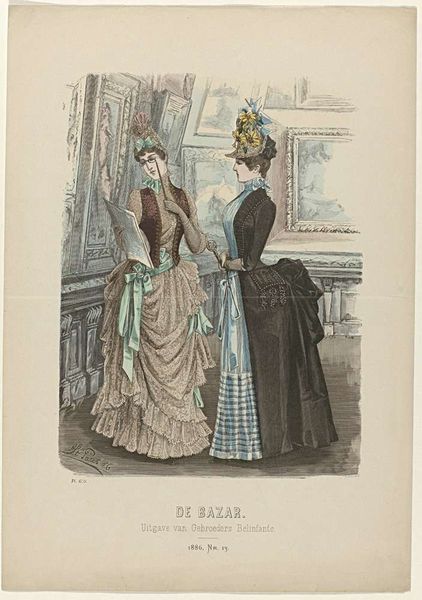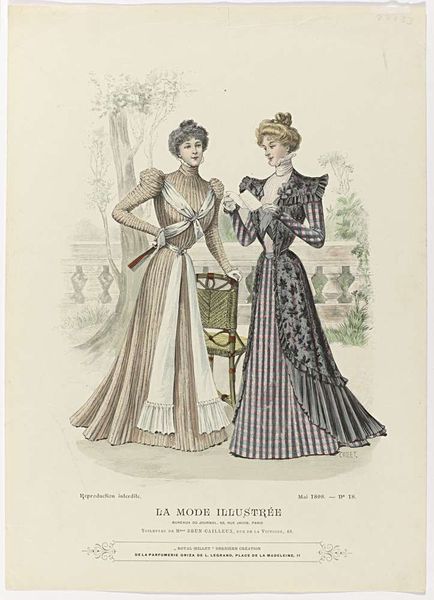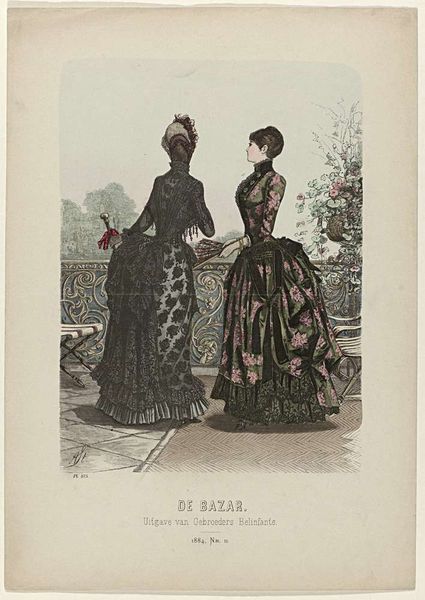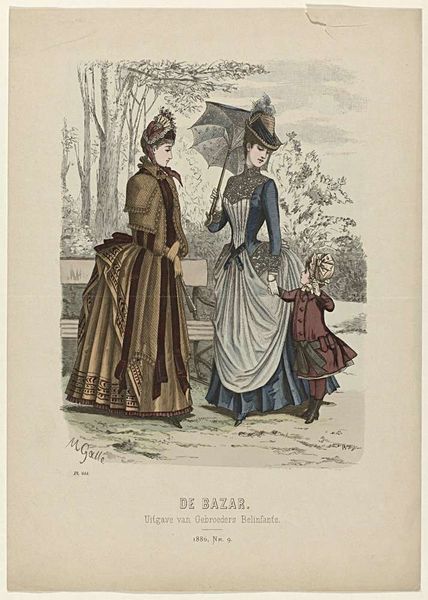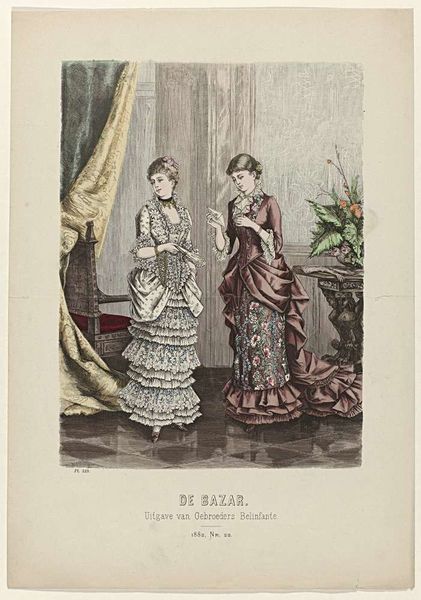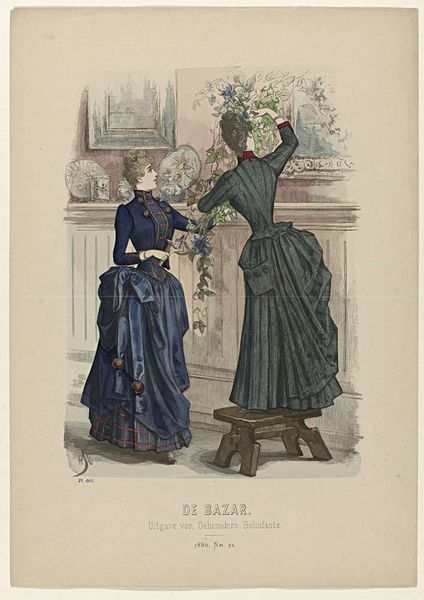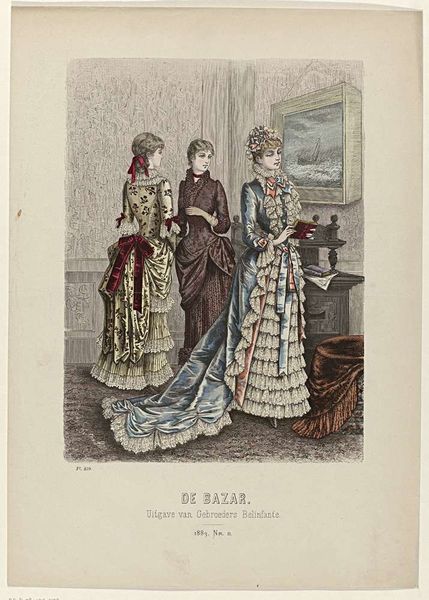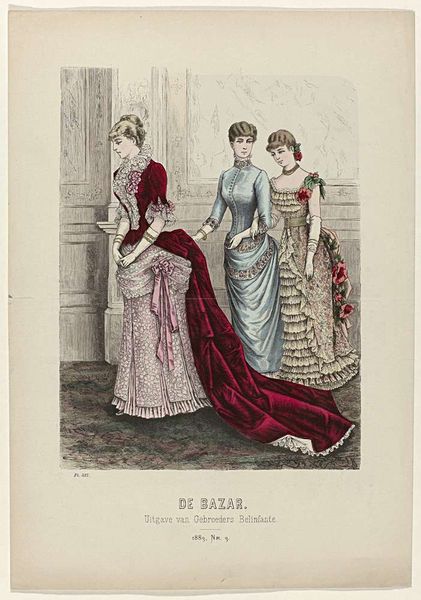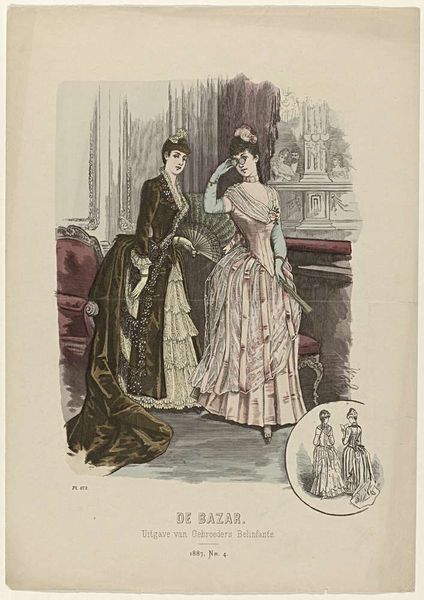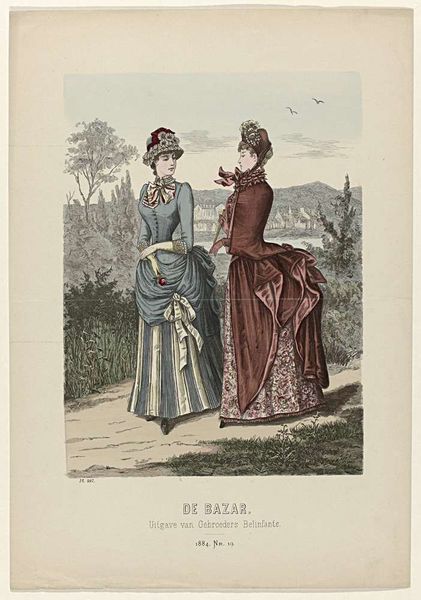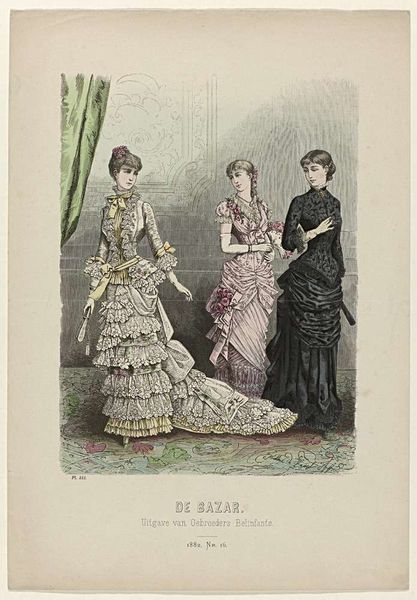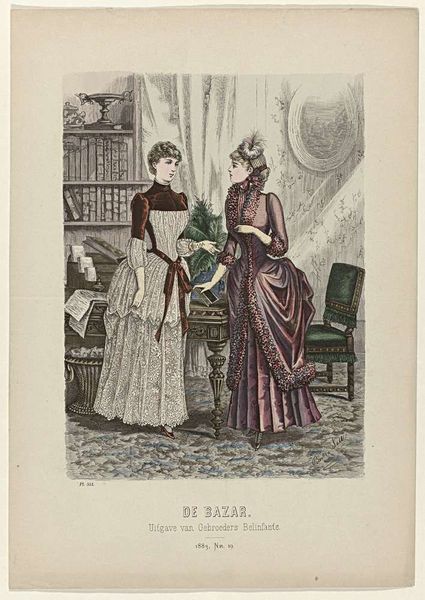
print, paper
#
portrait
# print
#
paper
#
watercolour illustration
#
genre-painting
Dimensions: height 382 mm, width 270 mm
Copyright: Rijks Museum: Open Domain
Curator: Immediately, I find myself noticing a distinct verticality in the rendering of the taller figure’s dress – a near-obsessive arrangement of pleats converging towards a single focal point around the waist. Editor: This is titled "De Bazar, 1886, Nr. 19, Pl. 659," and is cataloged as a print on paper, categorized by some as a watercolour illustration. Considering the name and date, what narrative is conjured in your mind as you look upon this artwork? Curator: A world dedicated to display and appearance is my first impression, with all forms seemingly organized under similar logics of display and arrangement. What is particularly intriguing is the implied geometry evident not only in the woman’s green dress on the right but echoing within the arrangement of flowers in the patterned attire on the left. It is very interesting to see how this geometrical structuring impacts my perception of both subjects. Editor: This print indeed reflects the era's burgeoning consumer culture. Fashion magazines were becoming increasingly prevalent, and prints like this served as marketing materials, disseminating style trends to a broader audience. Do you see any evidence of a class system influencing the aesthetic here? Curator: Oh certainly; that is clearly rendered by the materials. While both dresses, for example, exhibit meticulous detail, the green dress possesses a greater sense of structural solidity. It exudes formality, projecting a certain distance that positions it aesthetically closer to the architecture behind, unlike the tiered one on the left which communicates accessibility through layers of frills, seemingly arranged more with the intention of pleasing the immediate gaze of those who are up close and personal. Editor: Indeed, and beyond just influencing the individuals who consumed these images and their attendant status symbols, prints like "De Bazar" reveal larger trends in consumerism’s growth and reflect broader social and economic transformations. They also speak volumes about gender roles and expectations. What did you take away from your formal analysis, then? Curator: This analysis reminds me how aesthetic pleasure, beyond the simple appeal of pattern, springs from such sophisticated considerations in form, perspective, color, and composition. These aren't just images of clothing; they're miniature essays on social stratification through sartorial semiotics. Editor: Precisely. It's a visual record of not only what people wore but also how fashion played a crucial role in shaping identities and reflecting the era's values. I hadn’t considered the social stratifications so subtly encoded into the print’s visual vocabulary. Thank you.
Comments
No comments
Be the first to comment and join the conversation on the ultimate creative platform.
